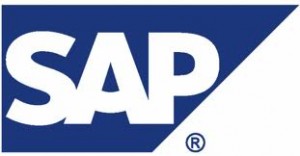Netweaver Single Sign-On: Is it Worth the Risk?
SAP’s acquisition of SECUDE in 2011 is finally bearing fruit. Recently, SAP announced the launch of Netweaver Single Sign-On 1.0 which can be downloaded from the Service Marketplace. This is the latest addition to SAP’s identity and access management portfolio and is based on SECUDE’s Secure Login and Enterprise SSO solutions. It uses protocols such as Kerberos, X.509 and SAML to enable mutual authentication between not only SAP applications but between SAP and legacy systems. It also supports cross-company authentication between different domains. This is achieved through federated identity systems based on a choice of IDP or STS, which is used to issue and verify security tokens.
SSO aligns well with SAP’s ambition to ‘help companies run better’. It does so by seamlessly integrating people, processes and technology without the inconvenience of multiple logons. It also lowers the Total Cost of Ownership (TCO) by reducing the burden on Helpdesks that spend an inordinate amount of time helping locked-out users reset their passwords. According to research performed by the META Group (now owned by Gartner) 20-50% of all support calls are caused by forgotten or expired passwords. The cost to manually reset passwords ranges from $15-30 per call, and on average, users call help desks with a password problem 4 times a yearâ€. Forrester Research estimates the average cost is closer to $70. This should give SAP a leg up over the competition, not that it needs it, judging by the latest results.
For security folks, the case for SSO is less clear cut. While it enables companies to standardize and enforce stricter password policies to legacy systems, simplify administration and reduce the risk that users will write down credentials needed to logon to different systems, SSO has some serious drawbacks.
Firstly, implementing SSO is no picnic. Retrofitting legacy systems can be a nightmare. Secondly, since SSO only deals with authentication and not authorization, the administrative gains are minimal: somebody still has to setup privileges for every new user. Privileges are rarely synchronized between systems.
Thirdly, it creates a single point of attack. This is by far the most serious concern with SSO which delegates authentication to a single, central Identity and Access Management (IAM) system. IAMs are attractive targets for attackers, especially when they provide direct access to information-rich SAP systems. Attack vectors used to compromise SSO logins and passwords range from cross-site scripting, phishing to social engineering and have been successfully deployed against SSO schemes used by tech giants such as Google, Facebook and Twitter. A special mention should be given to Denial of Service (DoS) attacks. Note that SSO intensifies the damage caused by DoS against an IAM since it impacts every system relying upon the IAM for authentication.
Clearly, SSO is a double-edged sword. To realize the benefits, you have to manage the risks. This should include multi-factor authentication and hardening of all systems in the SSO environment. The latter should include regular patching, client-side security such as SNC encryption for SAP GUI traffic and host-level vulnerability assessments. You can learn more about SAP vulnerability management here.


